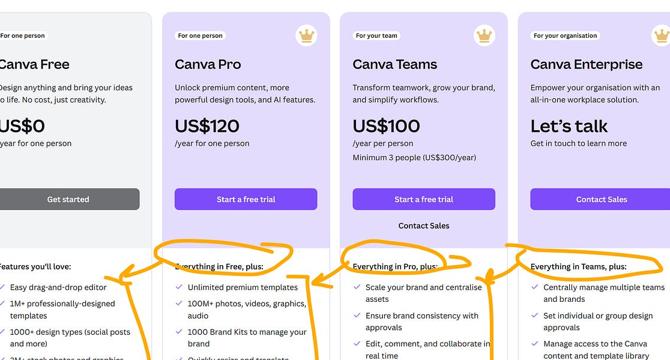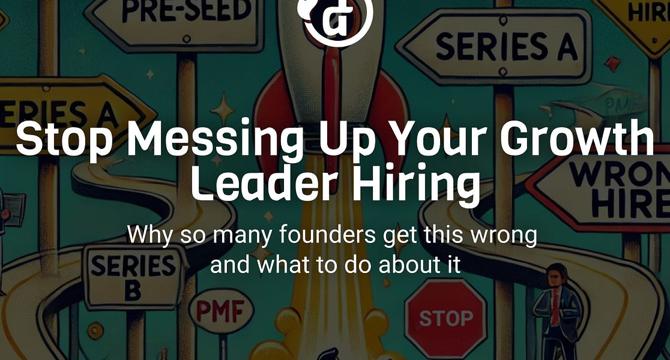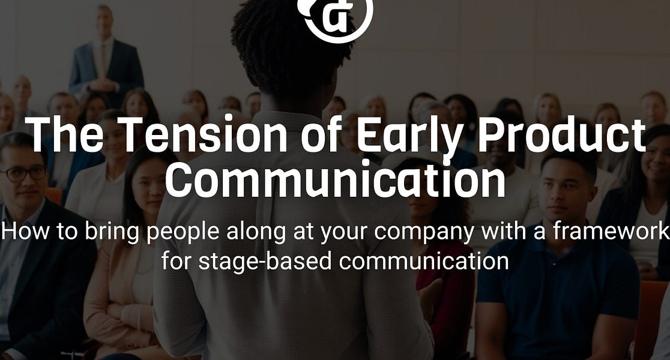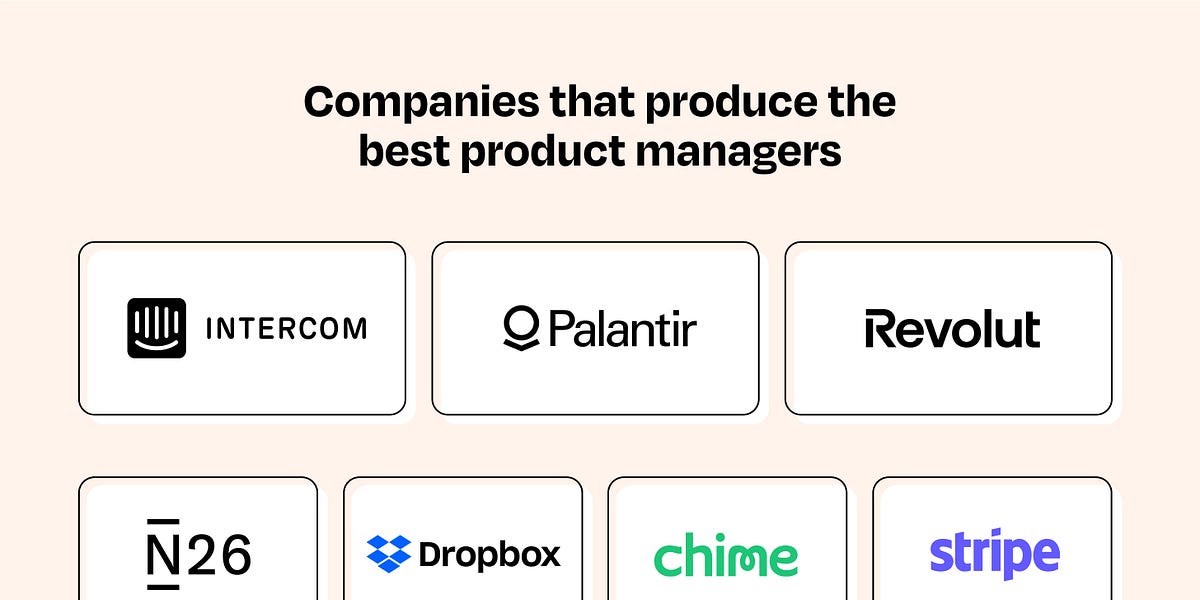Productivity News
The Beautiful Mess
113

Image Credit: The Beautiful Mess
TBM 348: Shared Understanding At Scale
- The article 'TBM 348: Shared Understanding At Scale' discusses various concepts related to shared understanding and information flow within organizations.
- It covers topics like cascade flattening, volume management, interfaces, the myth of universal dashboards, the seduction of nested loops, model traps, and the quest for a single roadmap view.
- Cascade flattening emphasizes the importance of focusing on actionable layers in goal-setting rather than over-complicating goal trees.
- Volume, Filters, and Interfaces highlight the need for structured communication to ensure relevant information reaches leaders effectively.
- The article challenges the idea of a universal dashboard, suggesting that clarity comes from purpose-built views for specific tasks.
- It warns against the seductive nature of nested loops in work processes, urging readers to recognize and avoid overcomplicating workflows.
- Model traps are discussed, emphasizing that while models can be useful for alignment, using them beyond their intended scope can lead to overlooking important aspects of work.
- The article concludes by highlighting the importance of understanding how models and frameworks compress complexity, often leaving out important nuances.
- Readers are encouraged to critically assess the models and frameworks used in their organizations to ensure they serve the intended purpose without oversimplifying or distorting reality.
Read Full Article
5 Likes
The Growth Catalyst
235

Image Credit: The Growth Catalyst
Using AI to Grow Products
- AI is influencing the role of product managers by enhancing various product management functions like Growth, Product Sense, and Strategy.
- For Growth Product Managers (PMs), AI plays a significant role in acquiring users, improving activation, retention, and monetization.
- AI facilitates rapid prototyping for achieving product-market fit and quick iteration cycles for testing ideas and hypotheses.
- In product-led acquisition, AI enables companies to offer advanced features as an acquisition strategy and supports AI-led content strategies.
- AI can enhance user activation by providing real-time guidance through adaptive onboarding and identifying and resolving friction points.
- For retention, AI can increase user engagement by accelerating feature updates and analyzing user research data to address churn.
- In terms of monetization, AI can aid in brainstorming novel pricing models and understanding industry trends for cross-transfer learnings.
- AI helps in hypothesis generation, experiment prioritization, and faster data exploration for informed decision-making by Growth PMs.
- Growth roadmap and strategy can benefit from AI through competitive insights synthesis, market trend analysis, and sophisticated forecasting.
- A live session will delve deeper into the impact of AI on product growth skills and aims to assist product managers in leveraging AI effectively.
Read Full Article
12 Likes
Leah’s ProducTea
114

Image Credit: Leah’s ProducTea
The most common mistakes with Pricing Pages
- B2B SaaS companies often make mistakes on their pricing pages that can sabotage their efforts.
- Hiding prices behind 'Contact Sales' buttons can lead to drops in pipeline quality as modern buyers value transparency.
- Freemium plans should accurately showcase core differentiators and not misalign with how enterprise evaluators test software.
- Feature tables should be optimized for both human readers and machine parsing to improve searchability and comparison.
- Clear and concise summaries of pricing plans are important to avoid confusion and enhance readability.
- Using stage-appropriate social proof, such as logos and testimonials, can help build trust with targeted audiences.
- Tiered transparency is recommended, including displaying list prices, using 'Starts at' for complex solutions, and providing ROI calculators.
- Avoid false summarization and convoluted feature descriptions in pricing pages to ensure clarity for potential buyers.
- Companies should focus on showcasing their differentiators and table stakes clearly to highlight their product's value.
- Targeting the right audience with appropriate social proof and testimonials can increase credibility and trust.
Read Full Article
4 Likes
Lenny's Newsletter
390

Image Credit: Lenny's Newsletter
How to win in the AI era: Ship a feature every week, embrace technical debt, ruthlessly cut scope, and create magic your competitors can't copy | Gaurav Misra (CEO and co-founder of Captions)
- Gaurav Misra, CEO of Captions and former Snap product leader, emphasizes shipping marketable features weekly to maintain product relevance amid AI advancements.
- Balancing rapid feature releases with quality maintenance involves cutting scope without compromising timelines, ensuring useful product iterations.
- Captions' strategy of a 'secret roadmap' alongside a public one facilitates innovative feature development to outmaneuver competitors.
- Taking strategic technical debt is crucial for startup agility to surpass larger corporations in innovation and speed.
- Despite neglecting its success initially, Captions grew to 500K users organically, showcasing the importance of identifying and leveraging product-market fit.
- Snap's unique approach of designers functioning as PMs contributed to their success, enabling them to break through as a major social network.
- Understanding customer complaints as prioritization signals aids in focusing on impactful product improvements that resonate with users.
- Gaurav emphasizes the significance of solving genuine problems in AI product development, transcending the hype to deliver value to users.
- Implementing a companywide ideation process at Captions fosters continuous innovation by involving every team member in generating breakthrough ideas.
- Snap's clear delineation of product scope based on mission allowed them to stay focused and make strategic decisions, even when forgoing potential opportunities like TikTok.
Read Full Article
22 Likes
The FishmanAF Newsletter
396

Image Credit: The FishmanAF Newsletter
Stop Messing Up Your Growth Leader Hiring
- Hiring a Growth leader is crucial in a startup's evolution, but the failure rate for Growth leaders is high due to variables like timing, expertise, and organizational alignment.
- At the Pre-Seed & Seed Stage, founders should lead growth efforts to focus on achieving product/market fit before scaling.
- Founder-led growth is effective in the early stages for feedback, product iteration, and understanding growth potential.
- For Series A companies, making the first dedicated growth hire requires a hands-on leader with competency in execution and customer knowledge.
- Prioritizing product-oriented Growth leaders helps in setting up experimentation processes and building growth loops for retention.
- At Series B stage, companies need to move from a single Growth practitioner to a small team to tackle complex and diversified growth challenges.
- Decisions at Series B involve choosing between bringing in a visionary or optimizing growth levers, depending on the validation of the growth model.
- In Series B and beyond, growth leadership at scale involves building organizational capabilities, decentralized structures, and structured experimentation processes.
- Leadership needs in Series B and beyond depend on centralized vs. decentralized structures, with a focus on unifying strategy, budgeting, and forecasting.
- Having a rubric for hiring Growth leaders at different funding stages can help companies avoid missteps and ensure alignment with product readiness and expertise.
Read Full Article
22 Likes
Lenny's Newsletter
89

Image Credit: Lenny's Newsletter
How to ship like a startup
- Mihika Kapoor shares seven lessons on successfully pitching big ideas, rallying a team, and launching new products like a startup within a growing company.
- Figma Slides, initiated bottom-up, quickly gained traction through prototyping, camaraderie, and optimism, surpassing competitors in usage within a year of launch.
- Tips include replacing PRDs with prototypes, building hype by working openly, fostering a unique team culture, finding believers for the team, and involving every team member as a part-time product owner.
- Encouraging a culture of experimentation, sharing work early and frequently, celebrating wins like the Oscars, and empowering passionate team members are highlighted as key strategies.
- Embracing transparency, involving engineers in design decisions, and blurring the boundaries between disciplines are advocated for fostering collaboration and a sense of collective ownership.
- By engaging every team member with users directly, PMs can drive action and innovation based on firsthand user insights, creating a more user-centric development approach.
- Mihika's insights emphasize the importance of speed, experimentation, and team empowerment in maintaining a startup mindset while navigating the challenges of growth within a company.
- The success of Figma Slides serves as a testament to the effectiveness of these strategies in propelling new product initiatives and fostering a culture of innovation and collaboration.
- Overall, the article provides practical guidance for product managers and teams looking to navigate the transition from startup to a larger organization while retaining the agility and innovation characteristic of startups.
- Lessons from Mihika Kapoor's experiences at Figma offer valuable insights into driving product success, fostering a strong team dynamic, and delivering impactful products within a corporate setting.
- By implementing tactics such as prototyping culture, open sharing of progress, and building a team culture based on shared quirks and celebrations, companies can continue to innovate and grow like startups.
Read Full Article
4 Likes
Leah’s ProducTea
77

Image Credit: Leah’s ProducTea
Building a Selection Process to find the right candidate
- Building a selection process is crucial to finding the right candidate and avoiding hiring mistakes.
- The selection process optimizes for hiring the best fit and ensuring the right candidates stay in.
- It is essential to know the problems the new hire will solve before writing a job description.
- Assigning clear roles like Decider, Expert, and Informer helps in making effective hiring decisions.
- Crafting stages that both screen and sell is important to attract and retain top talent.
- Providing specific feedback and respecting candidates in the pipeline for future opportunities is beneficial.
- Conducting retrospectives after each search enhances the learning and improvement of the hiring process.
- The article provides a template and guidelines for building an effective selection process.
- Feedback during interviews, clear accountability, and ethical treatment of candidates are emphasized.
- Maintaining a pipeline of potential candidates and continuously iterating the process are key to successful hiring.
Read Full Article
2 Likes
The Beautiful Mess
32

Image Credit: The Beautiful Mess
TBM 347: "Why Don't Our Leaders Care About How We Work?"
- The predominant belief divides people into two camps: process camp and high accountability, integrity, and agency camp, making it difficult to discuss thoughtful operating system design.
- Designing an operating system is a skill that some highly qualified individuals may lack, despite their other valuable contributions to an organization.
- Leadership meetings rarely involve in-depth discussions on ways of working, behaviors, and system design, unless a founder or executive who cares is present.
- Company founders play a significant role in shaping the operating system, and their level of interest and competence in organizational design can impact the company's success.
- Being a great front-line manager does not guarantee skill in designing operating systems for larger groups, leading to challenges when scaling efforts globally.
- Many executives view processes as beneath them and prefer delegating such tasks to support functions, which can hinder effective operating system design.
- Internal pushes to refine ways of working can face resistance from teams preferring more independent approaches, creating a debate between global vs. local methods.
- Some organizational roles responsible for operating system design may lack the necessary experience in human behavior, organizational design, and long-term change management.
- Advocating for change in operating system design may require starting with relatable stories and focusing on specific behaviors as a unifying discussion point.
- Keeping inertia in mind and demonstrating tangible improvements can help overcome skepticism and encourage individuals to engage in enhancing the company's operating system.
Read Full Article
Like
The FishmanAF Newsletter
390

Image Credit: The FishmanAF Newsletter
The Tension of Early Product Communication
- The article discusses the challenge of communicating about a new product within a larger company.
- It introduces a stage-based communication framework consisting of Discovery, Exploration, Viability, Growth, and Sustain.
- During the Discovery phase, communication is limited to the team and immediate product leadership to establish problem/customer fit.
- In the Exploration phase, communication involves select stakeholders like marketing and finance to test solutions for product/market fit.
- The Viability stage focuses on internal beta testing and engaging cross-functional teams while balancing the risk of not achieving product/market fit.
- The Growth phase is marked by involving the whole company, sharing success metrics, feedback, and scaling challenges.
- The article emphasizes the importance of controlling the narrative, avoiding premature hype, and stage-appropriate communication.
- Communication strategies evolve as the product progresses, with recommendations on timing, stakeholder engagement, and avoiding common temptations.
- It concludes by highlighting the complexity of product communication within a larger company and the need for strategic communication practices.
- Overall, the article provides insights on effectively managing communication at different stages of product development to ensure optimal team alignment and minimize misunderstandings.
Read Full Article
23 Likes
ADPList’s Newsletter
259

Image Credit: ADPList’s Newsletter
Salary negotiation 101
- Many professionals feel undervalued when their paychecks do not reflect their true worth, with surveys showing a high percentage of workers feeling underpaid.
- Negotiating salary involves understanding market value, recognizing being shortchanged, and strategically making a case, including steps like identifying if you're underpaid.
- Signs of being underpaid include comparing salary to industry standards, understanding pay gaps, and spotting red flags like increased workload without a raise or new hires earning more.
- Researching market salaries involves using tools like Glassdoor, LinkedIn Salary, and industry benchmarks to determine what you should be earning.
- Networking can provide real salary insights, with the importance of researching and comparing salaries highlighted to have leverage in negotiations.
- When preparing for a salary review, it's essential to evaluate personal accomplishments, track results, and have evidence to negotiate effectively.
- Understanding one's market value and utilizing data for negotiation can shift conversations towards fair compensation based on skills and industry standards.
- Considering factors like experience, skills, and location can impact earnings, highlighting the importance of knowing one's worth in the job market.
- Recognizing the importance of research, networking, and leveraging data to advocate for fair compensation is key in salary negotiations.
- Arming oneself with facts and approaching negotiations confidently based on researched market salaries can lead to better outcomes in advocating for fair pay.
Read Full Article
13 Likes
Lenny's Newsletter
273

Image Credit: Lenny's Newsletter
Which companies produce the best product managers
- In a subscriber-only newsletter, a deep dive was done into which companies produce the best product managers, looking at successful alumni founders and career acceleration.
- The analysis focused on the past 10 years of data and identified top companies like Airbnb, DoorDash, Salesforce, and Dropbox.
- A key factor considered was the number of successful alumni founders, with Palantir leading and Intercom, Dropbox, Plaid among the top.
- Chime stood out for producing a high percentage of alumni who not only start companies but also raise a Series A funding round.
- Companies like Scale, Palantir, Stripe, and Coinbase were highlighted for alumni founding successful venture-scale startups.
- Intercom was found to accelerate PM careers the most, excelling in internal promotions, external promotions, time to promotion, and reaching leadership positions.
- Revolut and Nubank followed closely in career acceleration rankings, while companies like Palantir, Deel, and HubSpot also performed well in various categories.
Read Full Article
14 Likes
Lenny's Newsletter
44

Image Credit: Lenny's Newsletter
A field guide for introverts: How to thrive at work without changing who you are | Susan Cain (author of "Quiet")
- Susan Cain, author of 'Quiet: The Power of Introverts in a World That Can’t Stop Talking,' provides a guide for introverts to excel at work authentically.
- Cain emphasizes that success doesn't require introverts to become more extroverted but to embrace their true selves.
- Key takeaways include understanding introversion, strategies for success in business without sacrificing temperament, and managing energy-draining situations.
- Tips encompass creating environments where introverted team members thrive, learning to say no, and leveraging strengths instead of focusing on becoming extroverted.
- To support introverted children, gradually expose them to new situations with patience.
- Successful introverts focus on aligning their career with their natural temperament and finding role models for inspiration.
- Techniques for effective meeting participation, developing deep work time, and showcasing expertise through written content are highlighted.
- Public speaking fear can be overcome through incremental desensitization strategies.
- Introversion is a temperament to leverage, not a trait to overcome, with many successful individuals being introverts.
- The episode covers introversion, public speaking anxiety, career strategies for introverts, effective meeting participation, and creating supportive work environments.
Read Full Article
1 Like
The Beautiful Mess
383

Image Credit: The Beautiful Mess
TBM 345: Back On Track
- After a longer gap between posts due to family reasons, new updates are now on track.
- The article focuses on three thoughts on change and leadership, highlighting the challenges of transformation.
- Leaders experienced in product management may struggle with the patience required for organizational change.
- Adapting to rapid disruptions and shifts in business dynamics can be a daunting task for leaders.
- Navigating transformation requires a unique set of skills distinct from product leadership.
- Understanding the context and expiration date can enhance willingness for change among individuals.
- Providing strategic context can improve decision-making and speed of execution within teams.
- Leaders are encouraged to prompt their teams for insights on decisions that could benefit from more strategic context.
- Reviewing responses and providing the necessary context can lead to actionable insights for better decision-making.
- It is essential for leaders to understand the implications of different decision-making scenarios within their organizations.
Read Full Article
22 Likes
ADPList’s Newsletter
447

Image Credit: ADPList’s Newsletter
Only 30 seconds to reject your portfolio?
- Hiring managers typically spend only about 30 seconds reviewing design portfolios, leading to swift rejections.
- Matej Latin suggests that portfolios often fail due to what's missing rather than flashy visuals.
- Common mistakes include quality issues like small images and grammatical errors, generic titles, and failing to capture the reader's attention.
- It's crucial to establish context clearly, avoid overly long case studies, and steer clear of generic language that lacks clarity.
- Articulating one's contributions clearly, as opposed to using 'we' excessively, and telling a compelling story in the portfolio are recommended.
- The importance of avoiding cookie-cutter templates and focusing on storytelling to showcase problem-solving skills is emphasized.
- Underlying issues like communication skills, linear design processes, and lack of attention to detail are highlighted as potentially affecting portfolio quality.
- Clear communication and storytelling, along with addressing underlying issues, are crucial for creating an impactful design portfolio.
Read Full Article
25 Likes
Lenny's Newsletter
388

Image Credit: Lenny's Newsletter
Why you’re so angry at work (and what to do about it)
- Executive coach Natalie Rothfels has noticed a trend of anger among co-founder clients, leading to a guide for transforming anger into wisdom at work.
- Anger arises when expertise, autonomy, values, or identity is challenged, but it should be skillfully engaged with, not suppressed.
- Anger is a valuable emotion signaling unmet needs; exploding or withdrawing responses can harm relationships and productivity.
- Recognizing the physical and emotional signs of anger helps in the transformation process.
- Pivoting inward to understand the root cause of anger and the unmet emotional needs is crucial.
- Identifying the unmet need behind anger helps in turning anger into actionable insights for future responses.
- Daily practices such as journaling and mindful breathing can aid in recognizing and transforming anger patterns.
- Exploring the emotions that underlie anger and linking them to core needs can facilitate constructive responses.
- The process of recognizing, understanding, and transforming anger can lead to more effective communication and decision-making at work.
- By addressing unmet needs and transforming anger into wisdom, professionals can navigate workplace conflicts with greater resilience and emotional intelligence.
Read Full Article
23 Likes
For uninterrupted reading, download the app